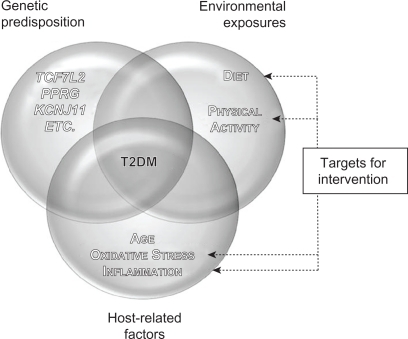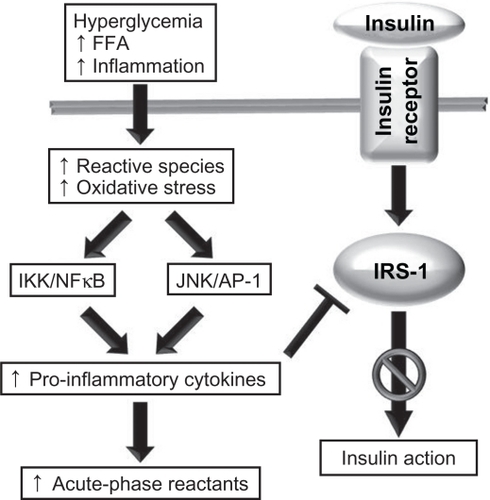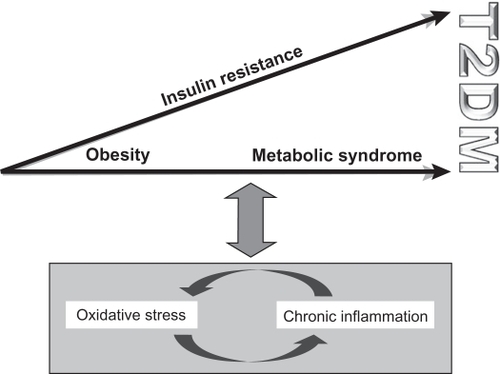Figures & data
Figure 1 Interaction between genetic predisposition, environment, and host-related factors affecting T2DM and potential areas of focus for intervention. The development of T2DM results from the interaction between genetic predisposition, environmental exposures, and various host-related factors. single-nucleotide polymorphisms within several genes, such as TCF7L2, PPARG, and KCNJ11, have been associated with T2DM risk via candidate gene studies and genome-wide associations. Lack of physical activity and a hypercaloric diet, with the resulting visceral obesity and increased adiposity in liver and muscle tissue, are associated with T2DM risk as well. Finally, host-related factors such as age, oxidative stress, and chronic inflammation also play a role in the development of the disease. Therapeutic interventions aimed at modifying lifestyle and/or levels of oxidative stress and chronic inflammation may aid in T2DM prevention and control.

Figure 2 The role of oxidative stress and inflammation in insulin resistance. A number of stimuli, such as hyperglycemia, high levels of circulating free fatty acid (FFA), and chronic inflammation, lead to increases in the production of reactive molecular species, and this in turn may lead to oxidative stress. Oxidants activate the JNK/AP-1 and IKK–NFκB axes, leading to an upregulation in the transcription of proinflammatory cytokine genes and increased production of cytokines and acute-phase reactants. Cytokines impair the action of the insulin receptor substrate, resulting in impaired insulin action.

